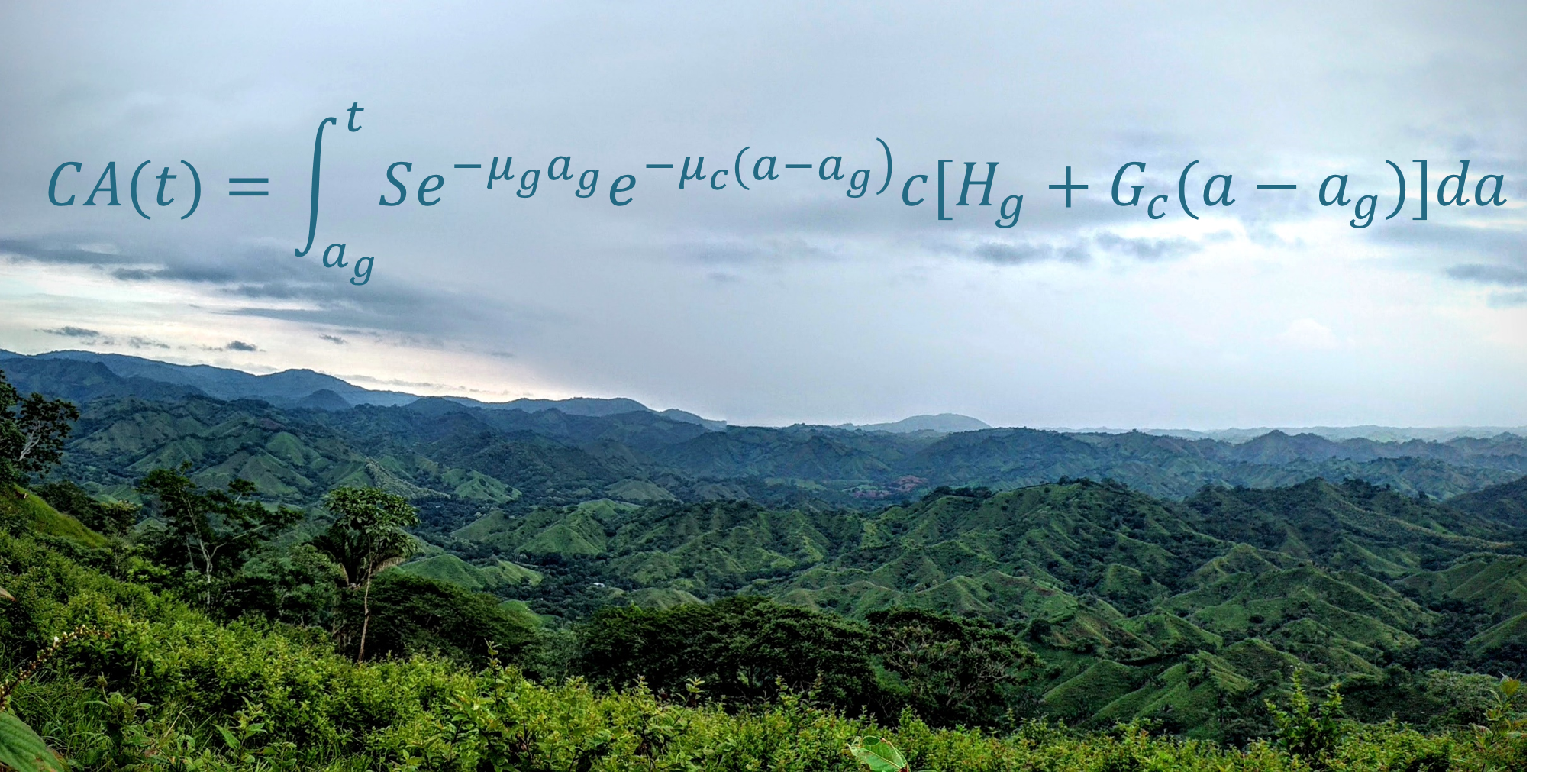T. Trevor Caughlin
Restoring forest to hundreds of millions of hectares of degraded land has become a centerpiece of international plans to sequester carbon and conserve biodiversity. To achieve these ambitious restoration goals, we will need to predict restoration outcomes at landscape and regional scales. However, ecological field studies reveal widely divergent forest recovery rates, challenging our ability to predict reforestation across sites. Mathematical models present an opportunity to synthesize results from different studies for a general understanding of reforestation dynamics. In our new study, we develop a theoretical framework to ask how tree canopy closure, a critical turning point for secondary forest succession, depends on landscape features beyond the scale of most field sites. Our modeling framework predicts the dynamics of reforestation using parameters that are commonly estimated in field studies. You can explore our basic model using the sliders below:
The simple version of our model (above) shows how different survival, growth and seed arrival rates can lead to differences in tree canopy closure within a single site. The model can also be applied to ask how landscape features impact reforestation rate across multiple sites. In particular, seed rain into deforested sites is critical for forest recovery and depends on landscape features that are difficult to measure or replicate. For example, fruit bats, an important seed disperser in degraded habitats of Southeast Asia, can range over tens of kilometers in a single night—an area far larger than most field plots.
Field studies reveal seemingly-contradictory results on the importance of seed rain for reforestation. Some studies find that adding seeds to degraded sites increases seedling abundance, whereas others do not. Similarly, some studies find that landscape features that increase seed availability (such as amount of surrounding forest cover) increase woody stem diversity, whereas others do find these relationships. Our results explain why field studies in sites with different landscape configurations could find different effects of seed limitation on reforestation rate. We predict that in landscapes with either very low seed availability, such as abandoned sugar cane plantations, or very high seed availability, such as primary forest, landscape-scale features will have a minimal impact on reforestation rate. In landscapes with intermediate seed availability, where there is enough seed rain to initiate reforestation yet not enough to guarantee rapid canopy closure, we show that seed availability can have significant impacts on reforestation rate. These results demonstrate how landscape features can lead to divergent forest recovery between otherwise similar patches.
Our new paper illustrates how mathematical models can provide conceptual insight into scaling up tropical forest restoration from sites to landscapes. More realistic models will be required to guide the spatial planning of specific forest landscape restoration projects. Adding realistic but complicating factors to theoretical models, such as fire disturbance and tree species interactions, is an exciting research frontier for restoration ecology. We anticipate that future modeling efforts will require collaboration between field ecologists and model developers to navigate between model realism and mathematical complexity. Ultimately, translating quantitative forecasts into spatially-targeted interventions for forest landscape restoration could help achieve ambitious goals of restoring hundreds of millions of hectares of tropical forest to degraded land.
Image credits: Landscape photo by Trevor Caughlin. Yep, the equation in the background is the primary model in the new paper!


